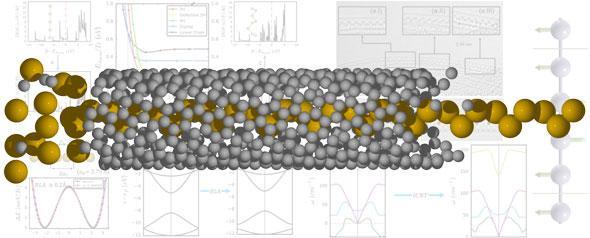
Researchers, from the Universities of Cambridge and Warwick, have developed the world’s thinnest metallic nanowire, which could be used to miniaturise many of the electronic components in use every day. The wire, made from a single string of tellurium atoms, is a true one-dimensional (1-D) material. These 1-D wires are produced inside extremely thin carbon nanotubes (CNTs) – hollow cylinders made of carbon atoms. The finished ‘extreme nanowires’ are less than a billionth of a metre in diameter – 10,000 times thinner than a human hair.
Encapsulating the nanowires is a useful method of making stable 1-D materials, and also necessary to prevent them from disintegrating. The researchers have also shown that it is possible to alter the shape and electronic behaviour of the nanowires by varying the diameters of the tubes which encapsulate them.
To make electronics faster and more powerful, more transistors need to be squeezed onto semiconductor chips. For the past 50 years, the number of transistors on a single chip has doubled every two years (Moore's Law). This is now getting close to the limit of how small a transistor can get before quantum effects associated with individual atoms and electrons start to interfere with its normal operation. Researchers are currently investigating various ways of keeping up with Moore’s law, and in turn keeping up with demand for faster, cheaper and more powerful electronics. 1-D materials could be one of the solutions to the challenge of miniaturisation.
Click here to read the full article.
Click here for access to the ACS Nano publication.
Click here for Dr Andrew Morris' research page.
Image credit: Paulo Medeiros (University of Warwick)

